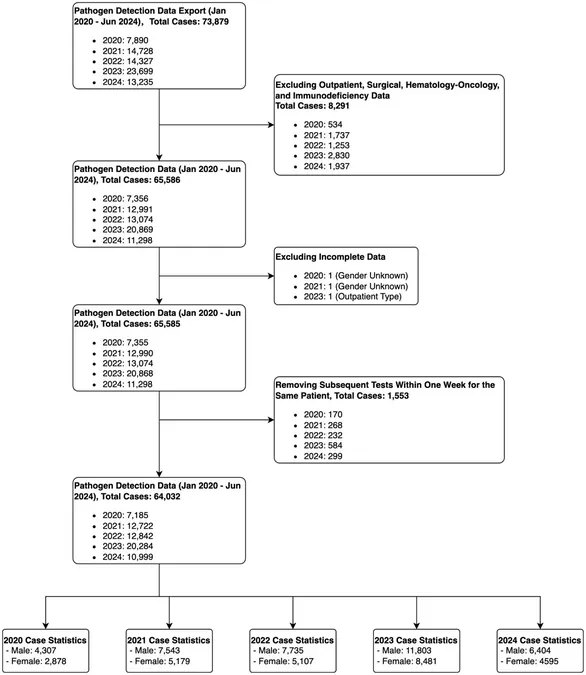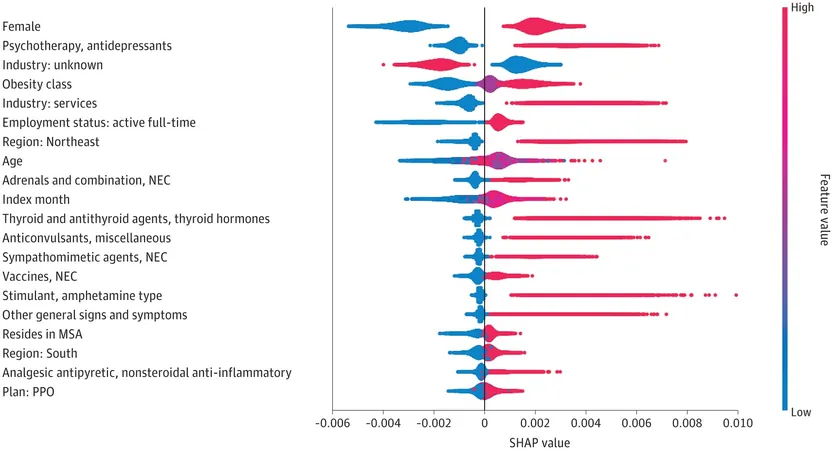
The Unexpected Surge in Respiratory Illnesses Among Children After COVID-19: What You Need to Know!
2025-01-22
Author: Yu
The COVID-19 pandemic has drastically altered health patterns across the globe, especially in children.
A recent study conducted in Southern China reveals astonishing findings regarding hospitalizations for acute respiratory infections (ARIs) and the prevalence of respiratory pathogens among pediatric patients.
Who Are the Patients?
The study included over 64,000 children diagnosed with ARIs, spanning two critical periods: January 2020 to December 2022 (during the height of COVID-19) and January 2023 to June 2024 (after the pandemic's restrictions were lifted). The results shown are eye-opening. During the post-COVID-19 period, the rate of hospital admissions for ARIs surged by an incredible 91% compared to the peak pandemic years.
Interestingly, the profile of the patients also changed; there was a rise in the median age of the children and a noticeable shift in the gender ratio. What’s more, while ICU admission rates remained largely stable, the rate of pathogen detection spiked, suggesting that children are more vulnerable than ever to multiple infections.
What’s Happening with the Respiratory Pathogens?
The research paints a vivid picture of the shifting landscape of respiratory illnesses. After restrictions were lifted in early 2023, pathogens that had been dormant surged. While certain pathogens like Chlamydia (Ch) maintained low rates, others, including Mycoplasma pneumoniae (MP), made a surprising comeback. After all but disappearing during COVID-19, MP had a notable outbreak in 2023 and is continuing to rise well into 2024.
Influenza also made a dramatic return. After vanishing in 2020, both Influenza A and B re-emerged with a vengeance in 2023 and 2024, causing concern among pediatricians and public health officials alike. Moreover, an unusual pattern was observed: children who were previously insulated from typical seasonal respiratory diseases are facing atypical outbreaks following the lifting of lockdown measures.
The Alarming Rise in Co-Infections
Even more worrying is the rise in co-infections. The prevalence of co-infections among children jumped from 6.3% during the pandemic to 15.1% in the post-COVID-19 period, climbing even higher in 2024. Children often experienced simultaneous infections, with HRV (Human Rhinovirus) taking the lead in most co-infection cases.
Gender and Age Group Variations
The study also highlighted differences in pathogen prevalence by gender and age. All genders and age groups showed increased detection rates post-pandemic. Remarkably, RSV (Respiratory Syncytial Virus), which typically affects infants, was found to be prevalent in children aged one month to three years compared to other age groups.
For children aged 3 to 6, HRV was the predominant pathogen, while older children showed increased instances of Mycoplasma pneumoniae and Influenza. This suggests that older children, who may have avoided exposure during the lockdowns, are now particularly susceptible.
ICU Admissions and Their Implications
While generally, the ICU admission rates remained unchanged post-pandemic, the scenario was different for specific pathogens. The admission rate for Human Bocavirus (HBoV) noticeably increased, raising red flags for healthcare providers.
Despite the apparent revival of respiratory illnesses, pediatric health officials stress that ongoing monitoring and vaccinations remain crucial. Children are now more exposed to a variety of pathogens, creating a potential public health challenge.
Final Thoughts: An Evolving Challenge
The data from Southern China echoes a global trend where respiratory illnesses are emerging with renewed intensity as COVID-19 restrictions ease. It serves as a crucial reminder of the fragile balance in public health — while pandemic measures effectively curtailed the spread of certain germs, their abrupt removal has led to significant epidemiological shifts.
Healthcare professionals worldwide are watching closely. Expect similar patterns elsewhere, and as we move forward, it’s vital to prioritize vaccinations and continuous monitoring to safeguard our children from the unexpected rise of respiratory infections. Stay alert and protect your loved ones!



 Brasil (PT)
Brasil (PT)
 Canada (EN)
Canada (EN)
 Chile (ES)
Chile (ES)
 Česko (CS)
Česko (CS)
 대한민국 (KO)
대한민국 (KO)
 España (ES)
España (ES)
 France (FR)
France (FR)
 Hong Kong (EN)
Hong Kong (EN)
 Italia (IT)
Italia (IT)
 日本 (JA)
日本 (JA)
 Magyarország (HU)
Magyarország (HU)
 Norge (NO)
Norge (NO)
 Polska (PL)
Polska (PL)
 Schweiz (DE)
Schweiz (DE)
 Singapore (EN)
Singapore (EN)
 Sverige (SV)
Sverige (SV)
 Suomi (FI)
Suomi (FI)
 Türkiye (TR)
Türkiye (TR)